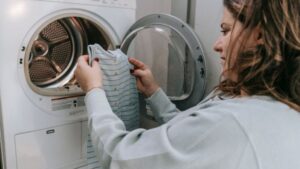Finding a water leak underground can be challenging for plumbers. Leaks can cause significant damage if not detected and repaired promptly. Effective detection requires a combination of methods and tools. Identifying the leak accurately can save time and minimize damage.
Plumbers use various techniques to locate leaks. Each method has its strengths and is chosen based on the situation. Proper detection is crucial to ensuring a thorough and cost-effective repair.
Understanding the Challenge of Underground Leaks
Underground leaks can be elusive and difficult to pinpoint. Water flowing underground can travel away from the source, making the leak location harder to determine. Ground conditions, such as soil type and depth of the pipes, add to the complexity.
A Plumbing takeoff service helps in identifying the locations of pipes and fixtures, which aids in leak detection. Without this information, locating the precise area of a leak can be nearly impossible. Accurate records and diagrams of plumbing systems are essential for effective leak detection.
Visual Inspection and Surface Clues
Plumbers start by inspecting visible signs of leaks on the surface. They look for water pooling, damp spots, or unusually lush vegetation. These surface clues can indicate where the leak might be located underground.
Additionally, they check for other signs like cracks in walls or foundations. Sometimes, changes in water pressure or increased utility bills can also suggest a hidden leak. This initial inspection helps narrow down the search area.
Listening Devices for Leak Detection
Acoustic listening devices are used to detect the sound of water escaping from pipes. Plumbers place these devices on the ground to listen for the noise of running water. These devices can detect sounds from deep underground, helping to locate the general area of the leak. Advanced models can filter out background noise and pinpoint the leak more accurately. Listening devices are effective in noisy environments where visual inspection is less helpful.
Thermal Imaging Cameras
Thermal imaging cameras detect temperature differences on the ground surface. Water leaks often cause temperature variations, which can be captured by these cameras. Plumbers scan the area with the camera to identify cooler or warmer spots. This method is useful for detecting leaks in both hot and cold water lines. Thermal imaging provides a visual map of temperature changes, helping to locate the leak more efficiently.
Employing Acoustic Sensors
Acoustic sensors are used to detect the sounds of leaks in pipes. These sensors can pick up vibrations and noises produced by water escaping from pipes. By placing sensors at various points, plumbers can analyze the sound and determine the leak’s location. This method is particularly useful for detecting leaks in metal pipes or those buried under hard surfaces. Acoustic sensors offer a precise way to pinpoint leaks without extensive digging.
Pressure Testing Methods
Pressure testing involves introducing air or water into the pipes and monitoring the pressure levels. A sudden drop in pressure indicates a leak in the system. Plumbers use pressure gauges to measure and track changes in pressure. This method helps in identifying leaks within a specific section of the plumbing system. Pressure testing is effective for both water and gas lines, providing a reliable indication of leaks.
Tracing and Mapping Water Lines
Tracing involves following the path of water lines to locate leaks. Plumbers use various tools to map out the plumbing system. By understanding the layout and tracing the lines, they can narrow down the area where the leak might be. Accurate mapping helps in focusing the search and minimizing unnecessary excavation. This method is essential for locating leaks in complex or large plumbing systems.
Ground Penetrating Radar (GPR)
Ground Penetrating Radar (GPR) is a non-invasive technique used to scan the ground. It sends radar pulses into the soil and receives reflections from underground objects. GPR can detect the presence of pipes and anomalies within the ground. This method helps in identifying the location and depth of water lines, making it easier to locate leaks. GPR is particularly useful in areas where other methods might be less effective.
Chemical and Dye Testing
Chemical and dye testing involves introducing a colored dye or chemical into the plumbing system. The dye travels through the pipes and emerges at the leak site. This method helps in visually identifying the exact location of the leak. Plumbers can use this technique in both visible and underground pipes. It is a straightforward way to confirm the presence of a leak and pinpoint its location.
Excavation Techniques
Once a leak’s location is narrowed down, excavation may be necessary to access and repair the damaged pipes. Plumbers use careful excavation techniques to minimize disruption and damage to the surrounding area.
They dig only in the area where the leak is suspected, based on previous detection methods. Proper excavation ensures that the repair can be made efficiently without causing additional issues or unnecessary damage to the property.
Professional Leak Detection Services
In some cases, specialized leak detection services may be required. These professionals have advanced tools and expertise in locating underground leaks.
They use a combination of methods and technologies to accurately find and repair leaks. Hiring a professional service can be beneficial for complex cases or when other methods have not provided a clear solution. Professional services ensure thorough and precise leak detection and repair.
To read more articles visit Learningpave
Conclusion
Locating underground water leaks involves a variety of methods and tools. Each technique has its advantages and is chosen based on the specific circumstances of the leak. From visual inspection to advanced technologies like GPR and thermal imaging, plumbers have multiple approaches at their disposal.
Accurate detection is crucial to minimize damage and repair costs. By using the right combination of methods and professional expertise, plumbers can efficiently find and fix underground leaks, ensuring the integrity and functionality of plumbing systems.




